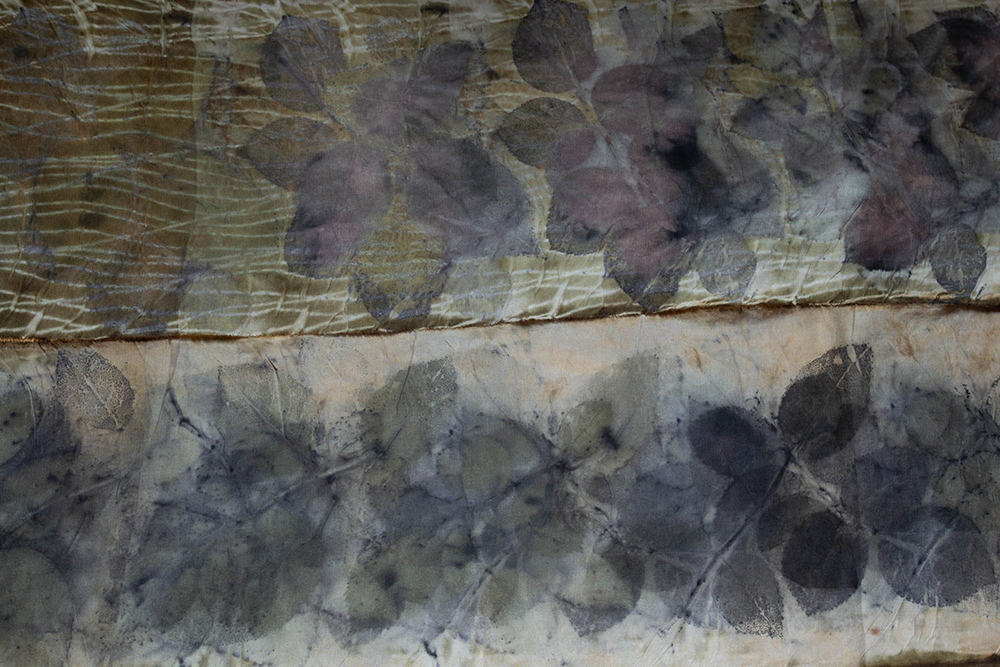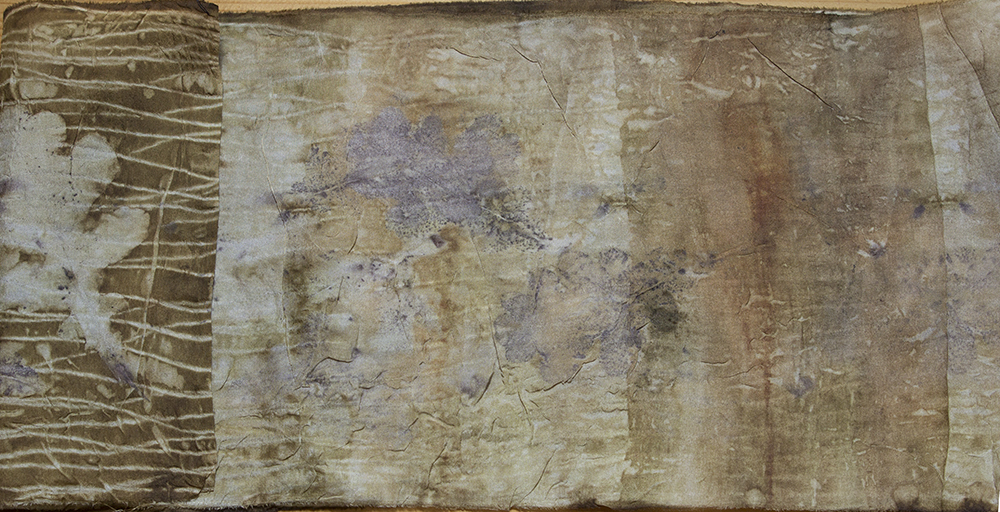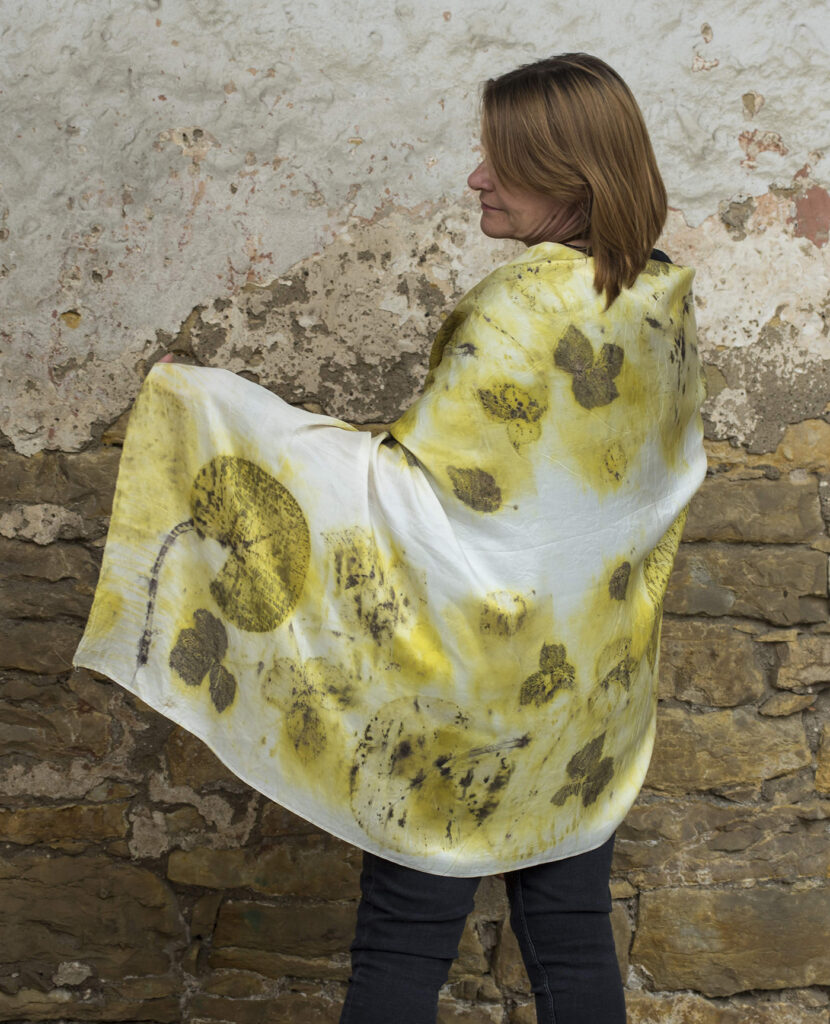
When dyeing natural fabrics with plants, you can add stunning colours and patterns to it. Autumn was beautiful this year and in my spare moments I tried to transfer this beauty onto silk. The technique of dyeing with plants is not harmful to your health or the environment, as no chemicals are being used. In this blog post, I chose specific plants/plant parts for the dyeing: rose leaves, oak leaves, blackberry leaves, onion skins, etc. But if you feel like experimenting, feel free! The material does not have to be silk – you could try cotton fabrics for a start, for example you could dye an old T-shirt.
The work process
- In case it is a new textile material, be sure to wash and treat the fabric beforehand. To treat the fabric, use a vinegar solution and then leave the fabric be for a while.
- Next, place the chosen plants on the fabric and roll it tightly around a stick, tying it carefully to ensure that the material and the plants touch together well.
- Rather put more than less onion skins in the pot. You need to add enough water to cover the rolls of fabric. If you want to get a little darker shade of colour, you can also add rusty pieces of metal.
- After boiling, immediately unroll the fabric rolls.
The results of the work samples
Rose leaves with metal
I placed some rose leaves on the fabric with under the leaf side facing up and some with the other side facing up. I then wrapped the fabric around a metal pipe and boiled it in water with onion skins for a while.

Plant printing with rose leaves
Rose leaves
Now again, I placed some of the rose leaves on the fabric with under the leaf side facing up and some with the other side facing up, but this time I soaked the rose leaves in iron water first and then tied the fabric around a wooden stick. I boiled it in water with onion skins again.

Rose leaves with natural colours
Onion skin pieces and black tea
I sprinkled the dried onion skin pieces and black tea onto the silk, rolled it around the wood and boiled the fabric in the water with onion skins.

Scarf dyed with onion skins
Oak leaves and onion skins
I placed some oak leaves on the silk and also sprinkled some onion skins and then rolled the fabric around the wood. Be sure to tie the roll tightly!

Oak leaves and onion skins
Blackberry leaves and water lilies
This silk scarf, however, is dyed using a different technique. I covered the scarf with plants and fabric and then steamed it for quite a few hours with rusty water and the result was pretty interesting. I got the inspiration to dye with water lilies from Ülle Saatmäe.
Author of the photo: Aile Nõupuu

Silk scarf with natural colours